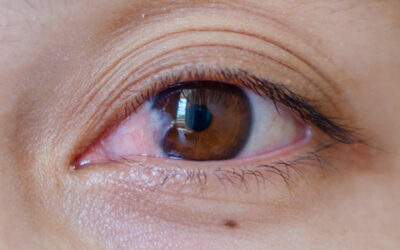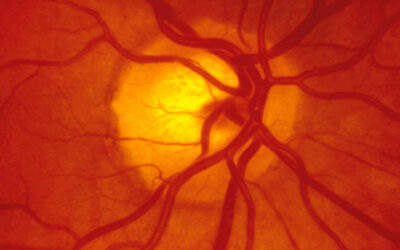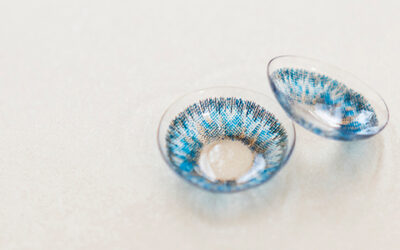Is Sensitivity To Light Serious?

We all know the dazing feeling of walking out of the darkness of a movie theatre and stepping into the bright glare of a sunny day – and most of the time, we simply look away or cover our eyes while this sensitivity passes within seconds. For one in four people, however, this light sensitivity can be debilitating and cause significant discomfort in their eyes, greatly affecting their quality of life.[1]
If you’re experiencing eye pain alongside headaches or nausea in response to light, whether it be sunlight or dimmer indoor lighting, you may be experiencing what optometrists describe as photophobia, better known as light sensitivity. Here’s a look into why we experience light sensitivity, what may cause it, and how to tell if your light sensitivity may be serious.
Why Do We Experience Sensitivity To Light?
There are at least 39 underlying medical conditions that can explain photophobia.[2] Light sensitivity can be caused by conditions such as dry eyes, an eye infection, eye injury, problems with the structure of the eye, and many more.
Occasionally, it can also be a side effect of certain medications, or of conditions relating to the brain such as migraine or concussion.
The physiology behind why some people experience more pain and sensitivity to light than others is complex and involves various parts of our bodies including our eye cells, nerve fibres, pain receptors, chemicals, how much we blink,[3] and signals in the brain.[4]
Put simply, photophobia is generally linked to the connection between the cells in your eyes that detect light, and the nerves that connect your eyes to your brain. Interestingly, people with a lighter eye colour are more likely to have light sensitivity because darker-coloured eyes contain more pigment to protect against harsh lighting.[5]
What Triggers Light Sensitivity?
Some common causes of sensitivity to light can include:
- Dry Eye Syndrome – the most common cause of sensitivity to light is dry eye syndrome,[6] which occurs when your tear glands can’t make enough tears or make poor-quality tears. Dry eyes affect the clear and protective outer layer of the eye, called the cornea. The cornea is the first entry point for light, so when that cornea isn’t properly lubricated with tears, exposure to any light can be uncomfortable.
- Blepharitis – is the irritation of the rim of the eyelid which leads to eyelid inflammation. This inflammation can lead to dry eyes and irritation of the corneas, which can have you quickly reaching for your sunglasses under normal lighting conditions.
- Conjunctivitis – best known as pink eye, conjunctivitis is the inflammation of the conjunctiva, a clear membrane that covers the white part of your eyeball (the sclera), as well as the inside of your upper and lower eyelids. Some types of conjunctivitis can cause a condition called keratitis (see below), which can cause the cornea to swell and become sensitive to light.
- Keratitis – this is the inflammation of the cornea, the clear protective layer at the front of the eyeball. Just like with dry eye and conjunctivitis, as the first entry point for light, when the cornea is irritated, light sensitivity can develop.
- Scleritis – this is the inflammation of the whites of your eye, medically known as the sclera. The sclera (alongside other areas of the eye like the cornea and conjunctiva) is densely packed with nerve fibres, making it very sensitive to pain. Any painful stimulus like inflammation invariably causes light sensitivity.[7]
- Migraine – migraines can cause sensitivity to light as well as sound, alongside a severe headache and other symptoms such as nausea, fatigue, and in 40% of cases, a migraine aura. Researchers believe that migraines are closely linked to the eyes and that migraines may be caused by a problem in the visual pathway that links the retina to the brain.[8]

Is Sensitivity To Light Serious?
While the majority of light sensitivity cases are short-lived, it can also be a symptom of more serious conditions that can be classed as medical emergencies. We recommend seeking care as soon as possible if your light sensitivity is painful, severe or you notice it worsening, or if alongside your light sensitivity, you experience:
- Blurred vision, vision changes, or an inability to see
- Neurological symptoms, such as slurred speech or weakness
- Fever or chills
- Severe headache
- A head injury
- A stiff neck
- Seizures or confusion
- Nausea or vomiting
The more serious conditions where photophobia may be a symptom include a torn retina, corneal abrasion (scratched cornea), subarachnoid haemorrhage (brain bleed), encephalitis (inflammation of the brain)[9], pre-eclampsia (high blood pressure during pregnancy), concussion[10] or meningitis[11], and more. If you suspect any of these, seek medical help urgently.
Shed Light On Your Light Sensitivity Today With A Qualified Optometrist
Many cases of photophobia are mild, pass quickly, and symptom relief can be achieved by simply wearing sunglasses and avoiding harsh lighting, but given a large number of causes of light sensitivity, we recommend coming in for an assessment with an experienced optometry team if your sensitivity does not quickly resolve.
During your appointment, your optometrist will perform a comprehensive examination of your eye, discuss your history and any medical conditions you have, confirm what may be causing your light sensitivity, and work with you to create a targeted treatment plan for a safe and speedy recovery. This may be a simple treatment or may require referrals to an ophthalmologist or other specialist.
Book your appointment with one of our experienced optometrists today at your local clinics.
[1] https://www.ncbi.nlm.nih.gov/pmc/articles/PMC3485070
[2] https://www.ncbi.nlm.nih.gov/pmc/articles/PMC3485070/table/T1/
[3] https://www.ncbi.nlm.nih.gov/pubmed/19043083
[4] https://www.ncbi.nlm.nih.gov/pmc/articles/PMC3485070/figure/F1/
[5] https://pubmed.ncbi.nlm.nih.gov/22527312/
[6] https://www.ncbi.nlm.nih.gov/pubmed/22019306
[7] https://www.ncbi.nlm.nih.gov/pmc/articles/PMC3485070/
[8] https://www.ncbi.nlm.nih.gov/pubmed/8980853
[9] https://www.ncbi.nlm.nih.gov/pubmed/2406101
[10] https://www.ncbi.nlm.nih.gov/pubmed/1779251
[11] https://www.ncbi.nlm.nih.gov/pubmed/8530275




